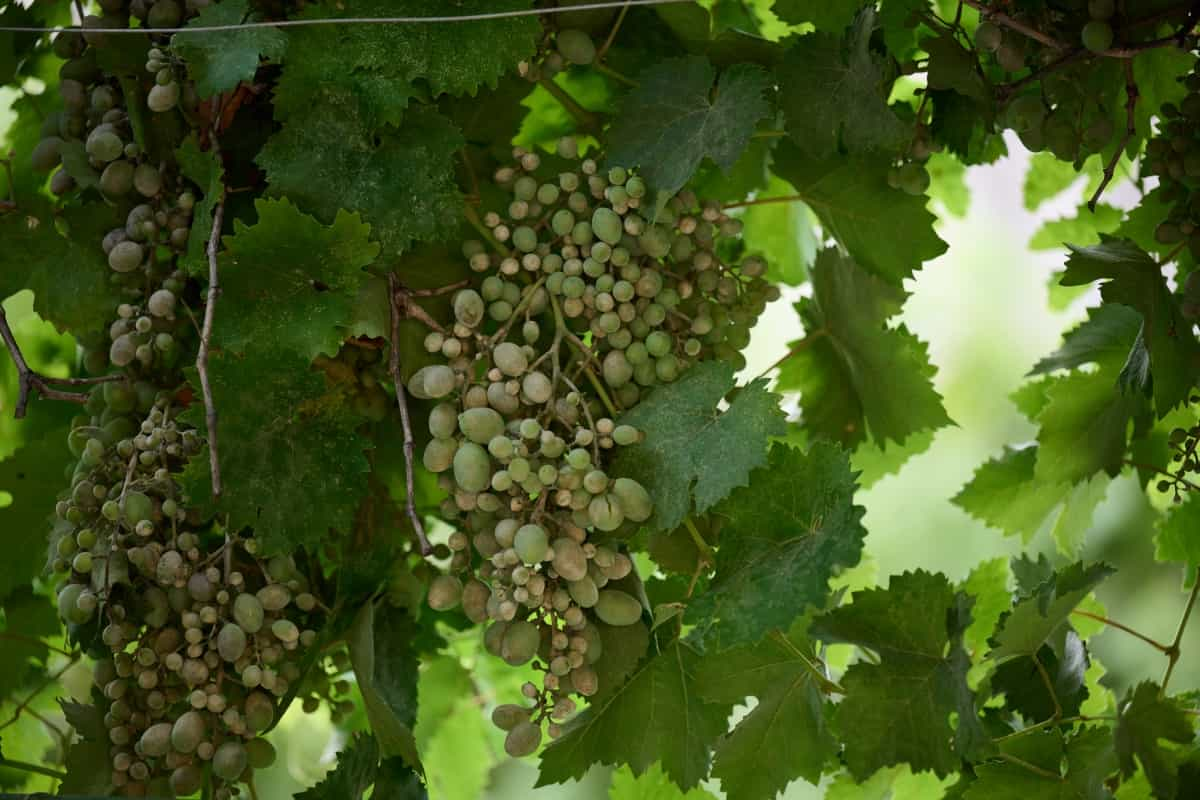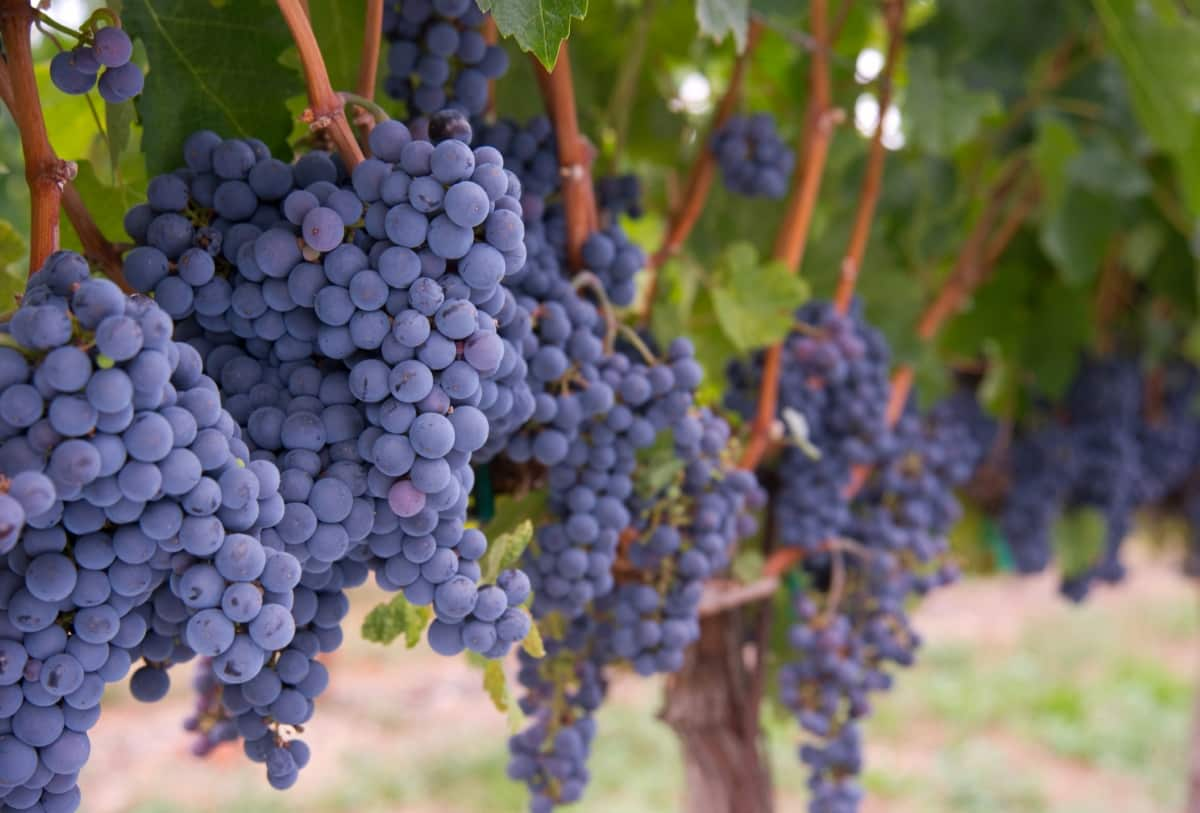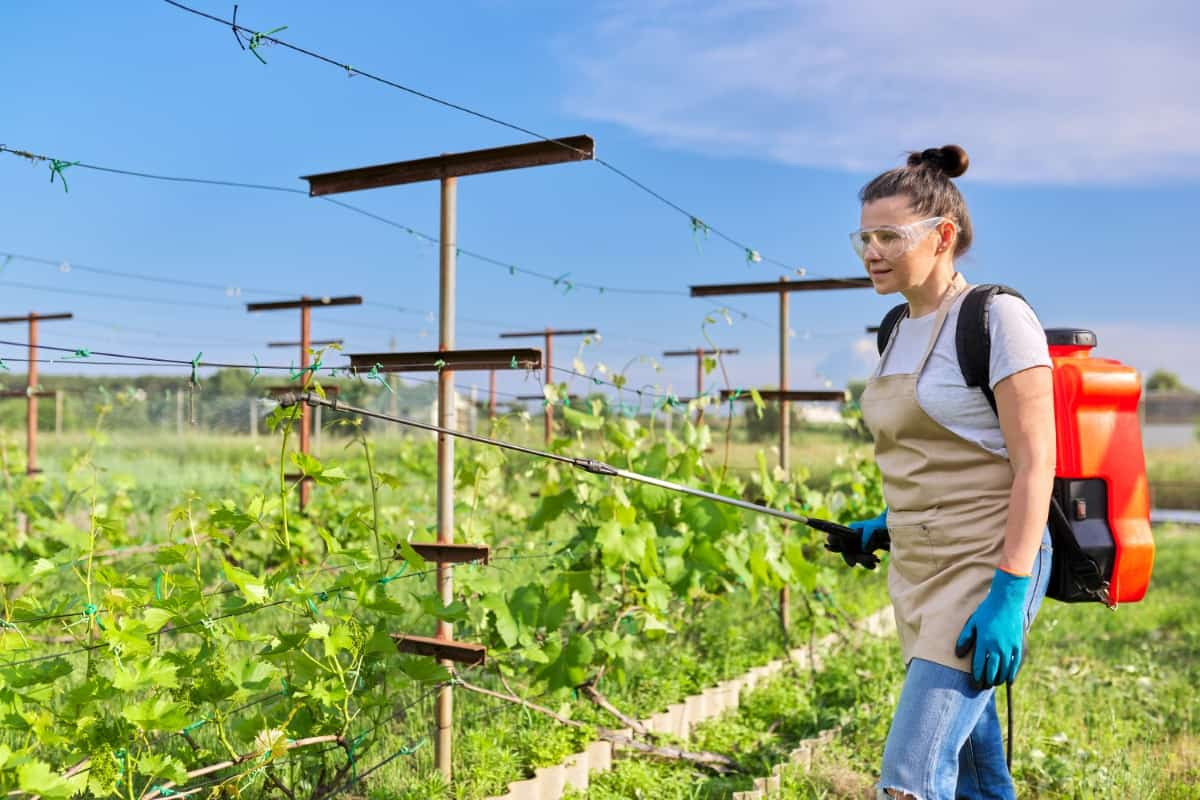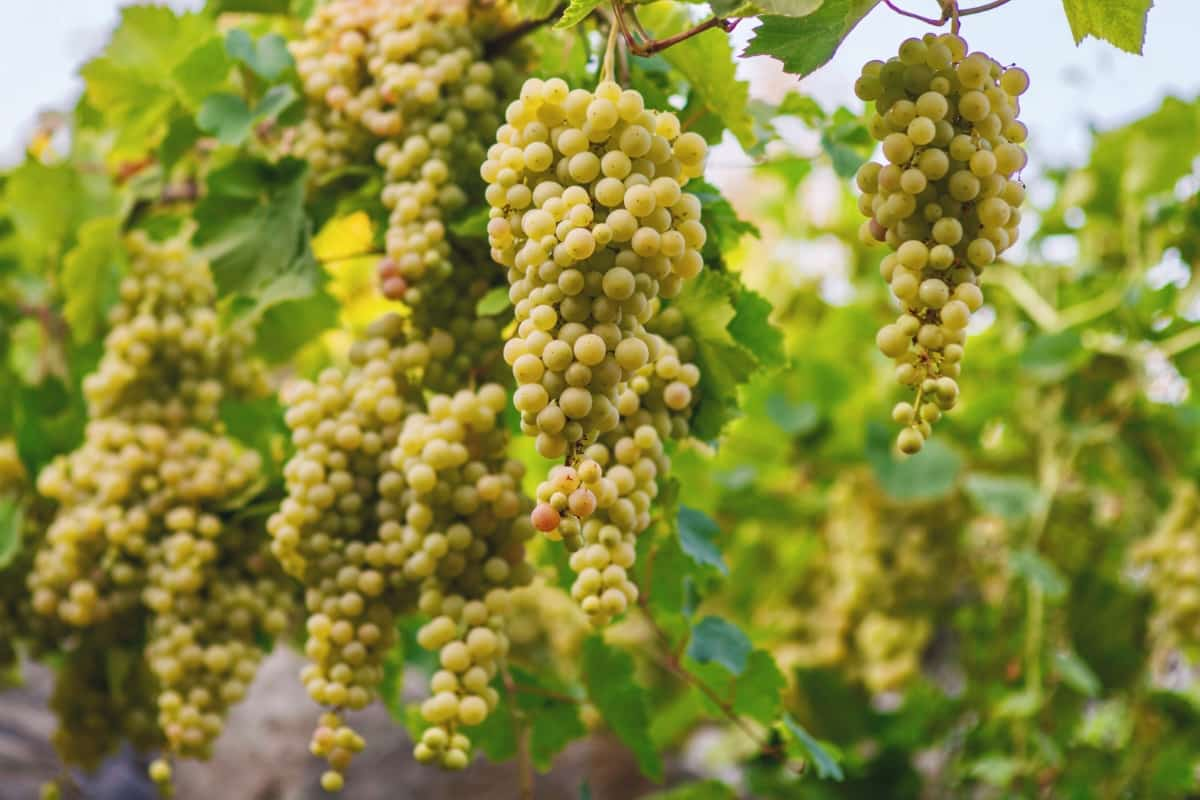Managing fungal diseases in grapes is crucial for ensuring a healthy and productive vineyard. Fungal diseases can significantly impact grape yield and quality if not properly addressed. While conventional fungicides are commonly used, there is an increasing interest in natural and organic treatments due to environmental concerns and consumer preferences. Here’s the guide to the management of fungal diseases in grapes, focusing on control and prevention using natural and organic treatments.

Management of Fungal Diseases in Grapes
Understanding Fungal Diseases in Grapevines
Fungal diseases significantly threaten grape cultivation, impacting yield and quality. Common fungal infections include powdery mildew, downy mildew, and botrytis. These diseases thrive in warm, humid conditions, making vineyards particularly susceptible. Powdery mildew is a disease due to fungus and is characterized by a white powdery substance on leaves, while downy mildew causes yellow leaf lesions. Botrytis, or gray mold, affects ripening fruit. Fungi spread through spores carried by wind or water, emphasizing the need for proactive management.
Identifying Common Fungal Pathogens in Grape Cultivation
Several fungal pathogens challenge grape cultivation. Powdery mildew, caused by Erysiphe necator, targets leaves and fruit. Downy mildew, caused by Plasmopara viticola, thrives in moist conditions and affects leaves, shoots, and berries. Botrytis cinerea, responsible for botrytis bunch rot, is prevalent in humid climates and affects ripening grapes. Anthracnose, caused by Elsinoe ampelina, leads to dark lesions on leaves and fruit.
To effectively combat these pathogens, growers must identify them early through regular monitoring. Integrated pest management (IPM) strategies, emphasizing cultural practices, biological controls, and natural fungicides, offer sustainable solutions for organic grape cultivation, minimizing reliance on synthetic chemicals and promoting a healthy vineyard ecosystem.
Best Natural and Organic Treatment Methods for Fungal Diseases in Grapes
Neem oil, a botanical extract, exhibits antifungal properties and can be applied as a preventive spray. Copper-based fungicides, like the Bordeaux mixture, effectively control various grape pathogens. Bio fungicides containing beneficial microorganisms, such as Bacillus subtilis, enhance disease resistance. Sulfur, an ancient remedy, remains a potent fungicide for powdery mildew.
In case you missed it: How to Control Grapefruit Pests Naturally: How to Get Rid of Them with Natural and Organic Treatment

Organic vineyards also benefit from compost teas, promoting soil health and microbial balance and indirectly reducing fungal pressures. Regularly applying these natural treatments, integrated with cultural practices, forms a holistic approach to combat fungal diseases, ensuring chemical-free, environmentally friendly vineyard management.
Best Cultural Practices to Prevent Fungal Diseases in Grapevines
Proper vine spacing and canopy management enhance air circulation, reducing humidity and minimizing conditions conducive to fungal growth. Pruning techniques that facilitate sunlight penetration and reduce excess foliage aid in drying the vines, preventing diseases like downy mildew. Early-season removal of infected plant material and thorough sanitation prevent the overwintering of pathogens.
Cover cropping and mulching promote soil health, fostering a diverse microbial community that suppresses harmful fungi. Introducing natural predators, like ladybugs, controls pests that may contribute to disease spread. These cultural practices create an environment hostile to fungal pathogens, promoting a sustainable and resilient grapevine ecosystem.
Best Biological Control Agents for Grape Fungal Pathogens
Biological control agents offer sustainable solutions for managing grape fungal pathogens. Trichoderma species, known for their antagonistic properties, inhibit the growth of various fungi and promote a balanced soil microbiome. Mycorrhizal fungi form symbiotic relationships with grape roots, enhancing nutrient uptake and bolstering plant defenses against pathogens.
Bacillus subtilis-based bio fungicides suppress diseases like powdery mildew, providing an eco-friendly alternative. Predatory insects such as lacewings and predatory mites target pest insects that may vector fungal diseases. Integrated use of these biological control agents contributes to a resilient vineyard ecosystem, reducing dependence on synthetic chemicals and fostering natural checks and balances against grape fungal pathogens.
Effective Use of Organic Fungicides in Grape Disease Management
Organic fungicides are crucial in grape disease management, providing effective alternatives to synthetic chemicals. Copper-based fungicides, like Bordeaux mixture, are widely used for their broad-spectrum activity against fungal pathogens. When applied preventively, sulfur is a natural element that effectively controls powdery mildew and other diseases. Plant-derived oils like neem oil exhibit antifungal properties and are valuable in organic disease control programs.
In case you missed it: How to Use Neem Oil to Control Spider Mites: How to Get Rid with Natural and Organic Treatment

Serenade, a fungicide containing Bacillus subtilis, is effective against various grape diseases. Regular inspecting and early intervention are key to maximizing the efficacy of organic fungicides. Their judicious use, integrated with cultural practices and biological controls, ensures a sustainable and environmentally friendly approach to managing grapevine fungal diseases.
Enhancing Soil Health to Minimize Fungal Infections in Grapevines
Maintaining robust soil health is integral to minimizing fungal infections in grapevines. Organic matter amendments, such as vermicompost and cover crops, enhance soil structure, moisture retention, and microbial diversity, creating an environment less conducive to fungal pathogens. Proper drainage mitigates excess moisture, reducing the risk of diseases like root rot.
Additionally, avoiding excessive irrigation prevents waterlogged conditions that favor fungal growth. Employing mycorrhizal fungi supplements improves nutrient uptake and strengthens plant defenses. Organic practices, including reduced tillage, preserve beneficial soil organisms and their functions. By prioritizing soil health through sustainable practices, grape growers can create a resilient foundation for their vineyards, mitigating the impact of fungal infections and fostering a thriving ecosystem.
Integrated Pest Management (IPM) Strategies for Sustainable Grape Production
Integrated Pest Management (IPM) is a holistic approach essential for sustainable grape production. Monitoring vineyards regularly to detect pest and disease threats early is a fundamental IPM strategy. Implementing cultural practices, such as proper vine spacing and canopy management, reduces conditions favorable to pests and fungal pathogens. Biological controls, like releasing beneficial insects and employing bio-fungicides, contribute to natural pest suppression.
In case you missed it: Neem Oil for Vegetable Garden Pest Management: Benefits, Application Procedure

Mechanical methods, such as netting, help protect grapes from birds without resorting to chemical deterrents. Utilizing pheromones for mating disruption is another IPM technique. By combining these strategies, growers can minimize the use of synthetic pesticides, conserve natural enemies, and promote a balanced ecosystem. IPM not only ensures sustainable grape production but also reduces environmental impact and safeguards the long-term health of vineyards.
Conclusion
In conclusion, managing fungal diseases in grapes requires a comprehensive and sustainable approach. Growers can foster resilient vineyards by understanding the nature of these diseases and employing natural and organic treatments alongside cultural and biological controls. Prioritizing soil health, integrated pest management, and judicious use of organic fungicides collectively contribute to a holistic, environmentally friendly strategy, ensuring the longevity and quality of grape cultivation.
- Beneficial Insects in Pest Management
- Natural Solutions for Pest Control in Flower Gardens
- Types of Fungicides Used in Agriculture
- Common Issues in the Fruit Development Stage of Pomegranate Farming
- Fruit Development Issues in Papaya: Easy Solutions and Treatment
- Soil-Borne Diseases and How to Protect Your Plants
- Practices to Prevent Disease Spread in the Garden
- From Wilted to Thriving: How to Treat Root Rot Naturally in Houseplants
- Natural Remedies to Cure Brown Spots on Fig Tree Leaves